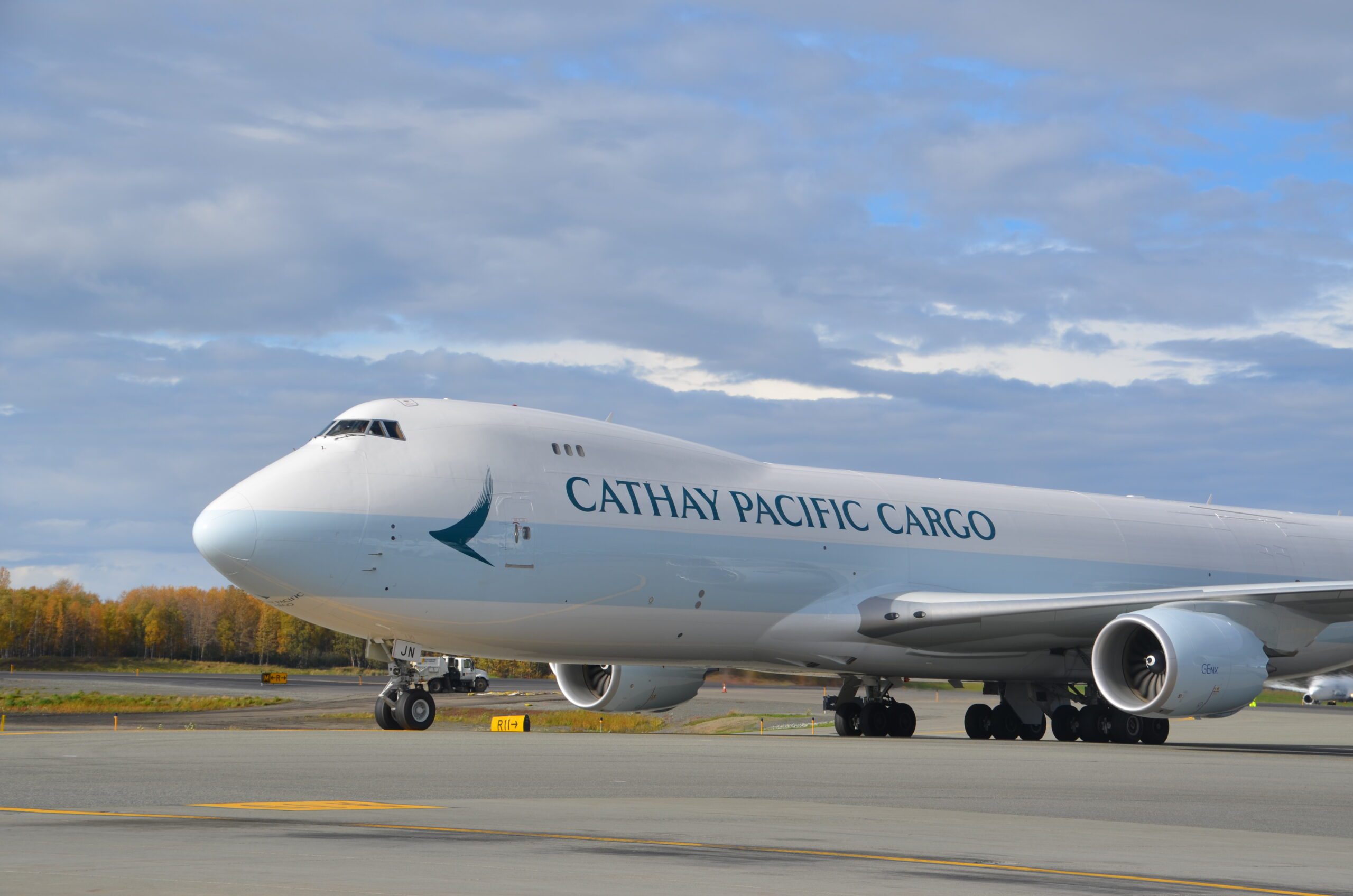
FLE CGO C033Y18 E0 scaled
New travel restrictions and quarantine measures imposed by the Hong Kong government force Cathay Pacific to reduce capacity to the lowest level since May 2020. The airline will cut passenger capacity in January to just two percent compared to some ten percent in December, while cargo capacity is down from seventy to twenty percent, the carrier said on January 6. Latest travel bans severly hurt Cathay Pacific.
This means passenger capacity is almost back to May 2020 levels, when during the first wave of Covid it was reduced by 97.5 percent to 2.5 percent. In November, the most recent month with official traffic data, capacity was 88.2 percent down on 2019 levels and cargo capacity by 28.6 percent.
Cathay said it is forced to take these drastic steps for multiple reasons. On January 5, the Hong Kong SAR government announced a travel ban from eight countries that comes into effect on January 8 and will last for two weeks until January 21. “In view of the rapidly worsening global pandemic situation due to the Omicron variant”, flights are suspended from Australia, Canada, France, India, Pakistan, the Philippines, the UK, and the US. Passengers that have stated in one of these countries for more than two hours “will also be restricted from boarding a passenger flight for Hong Kong in order to stop relevant people from traveling to the city via transit”, a government statement says.
Cape Verde, Niger, and South Sudan have been added to the so-called Group A list, which prohibits non-Hong Kong residents from entering Hong Kong if they have stayed in these countries for longer than 21 days. Bulgaria and Martinique have been added to this list from today and tomorrow respectively. The new measures seem extremely harsh as Hong Kong reported just 38 new Covid-cases on January 5, but they are in line with the zero-Covid policy of the China mainland authorities.
Cargo capacity hit by aircrew quarantine measures
While Cathay has been forced to deal with restrictions for passengers since the start of the pandemic in early 2020, it has been able to compensate for the loss of passenger revenues by operating extra cargo services. These operations have been disrupted since the government imposed enhanced quarantine measures on the crew of cargo flights from January 1. “All locally based air cargo crew who have laid over at overseas places or Taiwan and are currently subject to self-isolation in designated quarantine hotels (DHQs) for three days will be required to stay in DHQs until they have obtained negative results from the nucleic acid tests for COVID-19 taken on the seventh day following their return to Hong Kong.”
Strict quarantine measures have been in place since February 2021, already hurting the availability of crew. In response to the measures, Cathay introduced longer duty cycles for HK-based aircrew that comprised a 21 duty cycle followed by a fourteen-day quarantine period in hotels. “These arrangements placed a significant burden on our aircrew and their families”, Cathay Chairman Patrick Healy said in the HY1-report. “Subsequent easing of some quarantine requirements for aircrew enabled us to reactivate cargo capacity and to gradually increase passenger capacity towards the end of the first half.”
This measure severely reduces the availability of crew, although more pilots might be able to operate cargo services now that passenger services have been reduced. Yet, Cathay has opted to reduce its cargo capacity by two-thirds to just twenty percent. The carrier suspended all cargo operations this first week of January and will resume them on January 7. The new rules have forced other airlines too to reduce passenger and cargo services to Hong Kong.
Cathay one of the airlines hit the hardest by the crisis
Cathay Pacific is one of the airlines that has been hit the hardest by the pandemic, while also suffering from the effects of political and social unrest before that. Chief Customer and Commercial Officer, Ronald Lam, called the situation in November “extremely challenging”. That month, the airline benefitted from the reopening of travel to the US and Australia, but these markets are closed again now for at least two weeks. November was also an “exceptionally strong cargo peak period”, reaching 29 percent capacity that was the highest since the start of the crisis. Already then, Lam was worried about the impact of the Omicron variant which has just emerged at the end of November.
Cathay Pacific reported a HK$7.565 billion attributable loss for the first six months of 2021 or HK$5.031 billion after tax. By the end of June, it had $32.8 billion in unrestricted liquidity thanks to the recapitalization with HK$39 billion in June 2020. The carrier reduced its fleet to 174 aircraft, but 88 airliners are currently parked with forty percent parked outside Hong Kong. With the latest capacity reductions, the active fleet will come down further.
On its website, Cathay Pacific says: “We will operate as many services as possible to key destinations while complying with the latest Government measures. These restrictions continue to impact our flight schedule and, consequently, will further reduce our passenger’s flights to and from Hong Kong from now until tentatively the end of the first quarter of 2022 (March 2022).”
Views: 2



